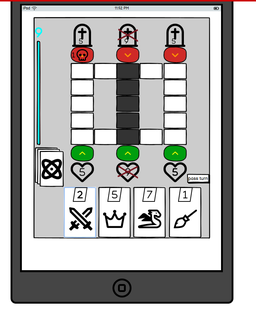Numberia Summoner Clash

Project Overview
Numberia Summoner Clash is an educational math game designed for young learners, developed as a final project for my serious game class. Inspired by popular games like Clash Royale and Stormbound, it combines strategic gameplay with mathematical operations to create an engaging learning experience.
Key Features
- Turn-based strategic gameplay
- Math-based combat system
- Multiplayer battles
- Dynamic unit interactions
- Interactive tutorial
Game Mechanics
In Numberia Summoner Clash, players summon units with numerical power values. When units clash:
- A subtraction operation occurs between the units' power values
- The unit with the lower power is defeated
- The winning unit's power is reduced by the defeated unit's power
- The victorious unit continues to advance towards the enemy castle
This mechanic encourages players to think strategically about unit placement and number operations, reinforcing mathematical skills in an engaging context.
Design Process
The development of Numberia Summoner Clash followed a structured design process:
- Conceptualization: Extensive note-taking and mental design
- Paper Prototyping: Created and tested with roommates
- Digital Prototyping: Used Balsamiq for low-fidelity prototypes
- Iterative Testing: Conducted multiple rounds of testing
- Refinement: Improved game mechanics and fixed loopholes
- Tutorial Design: Developed an interactive tutorial using Balsamiq
Educational Impact
Numberia Summoner Clash aims to:
- Improve mental math skills, particularly subtraction
- Enhance strategic thinking and planning
- Increase engagement with mathematical concepts through gamification
- Provide a fun, competitive environment for learning
Future Development
While Numberia Summoner Clash was developed as a class project, its potential for educational impact is significant. Future development could include:
- Implementing the game as a fully functional digital application
- Expanding mathematical operations to include addition, multiplication, and division
- Creating a progression system with increasingly complex mathematical challenges
- Developing an AI opponent for single-player practice
- Integrating with educational curricula for classroom use